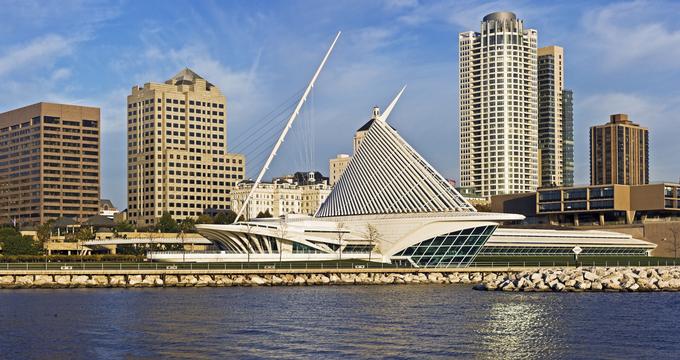The Milwaukee Art Museum is one of the Midwest’s premier art institutions, showcasing more than 25,000 works spanning ancient artifacts to contemporary masterpieces.
Recommended For
Art enthusiasts
Explore German Expressionism, American decorative art, and more.
Families
Engage in hands-on workshops and art-inspired educational programs.
History lovers
Discover the story behind Milwaukee’s oldest art institutions.
Students & educators
Access dynamic programs, lectures, and school group tours.
History
The museum’s roots date back to the 1870s when Milwaukee lacked a formal art institution. In 1888, Frederick Layton established the Layton Art Gallery with 38 paintings and the help of British architects W. J. and G. A. Audsley. Shortly after, the Milwaukee Art Association was founded and later evolved into the Milwaukee Art Institute. By 1957, the Layton Art Gallery and the Milwaukee Art Institute merged to become the Milwaukee Art Center. After years of artistic and architectural growth—including support from major donors like Mrs. Harry Lynde Bradley—the center was officially renamed the Milwaukee Art Museum in the early 1980s and received national accreditation.
Collections & Exhibitions
The Milwaukee Art Museum holds an extensive permanent collection of over 25,000 works, including key holdings in American decorative arts, Haitian art, and German Expressionism. The museum is also known for its traveling exhibitions and collection-specific wings that highlight significant donors and themes:
- Mrs. Harry L. Bradley Collection: European prints and sculptures, 19th- and 20th-century American art
- Floyd and Josephine Segel Collection: 300 photographs by Diane Arbus, Irving Penn, and others
- Maurice and Esther Leah Ritz Collection: German Expressionist and Ashcan school art
Highlights & Visitor Favorites
- German Expressionism and early modernist works
- The Quadracci Pavilion by Santiago Calatrava
- Paper Play: Kindergarten to Contemporary Art (on view through July 16, 2017)
- Ralston Crawford: Art is for Every Day (on view through January 29, 2017)
Education & Digital Access
- Interactive group activities and guided tours for all ages
- Public lectures, art-making workshops, and discussions
- Programs scheduled throughout the week and on special event nights
- Opportunities to learn and create with guidance from teaching artists
Visitor Tips
- Hours: Check the official website for current hours and special exhibits
- Admission: Prices vary; discounts may apply for students, seniors, and families
- Dining: On-site café with views of Lake Michigan
- Accessibility: Fully accessible galleries and public spaces
- Shopping: Museum store featuring art books, gifts, and local designs
Location
Milwaukee Art Museum
700 N. Art Museum Drive, Milwaukee, WI 53202
Phone: 414-224-3200
Website: mam.org
Plan Your Trip


